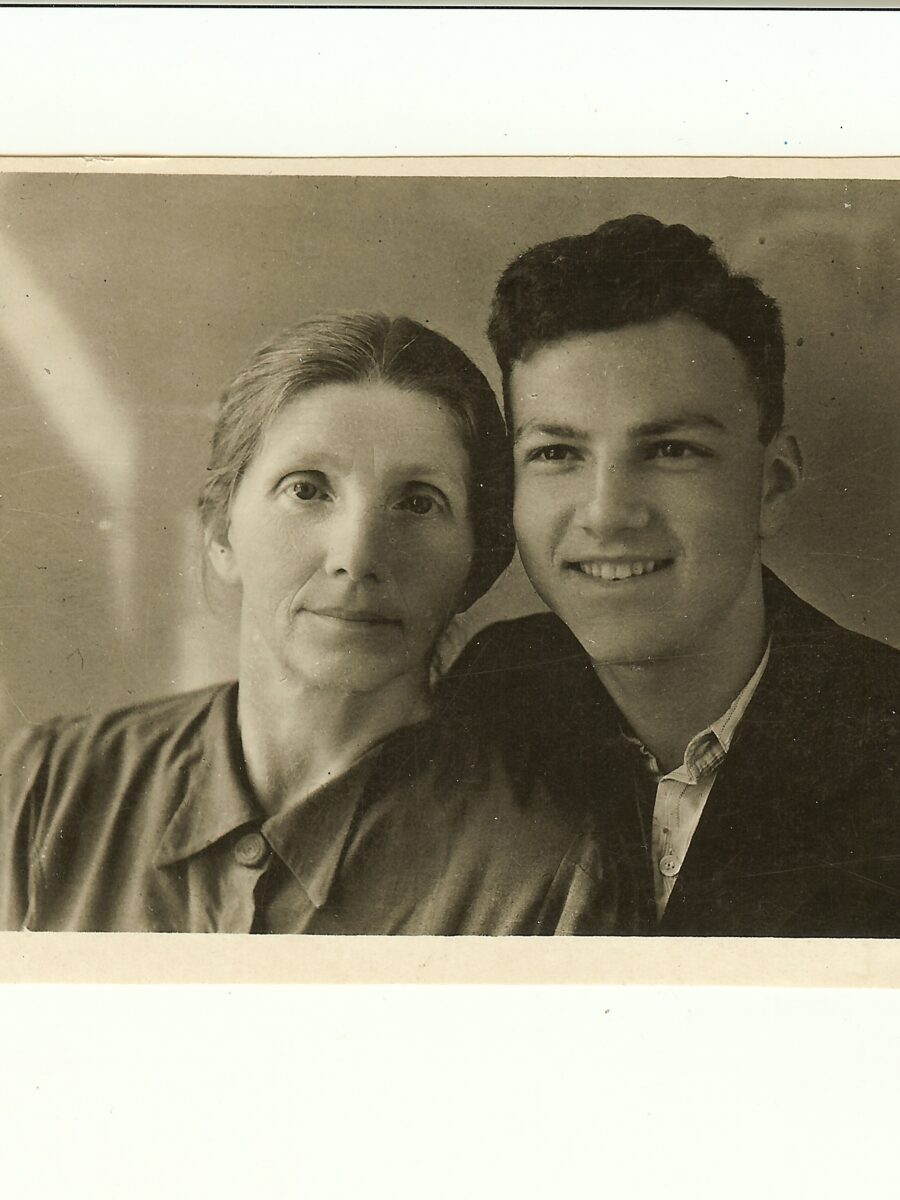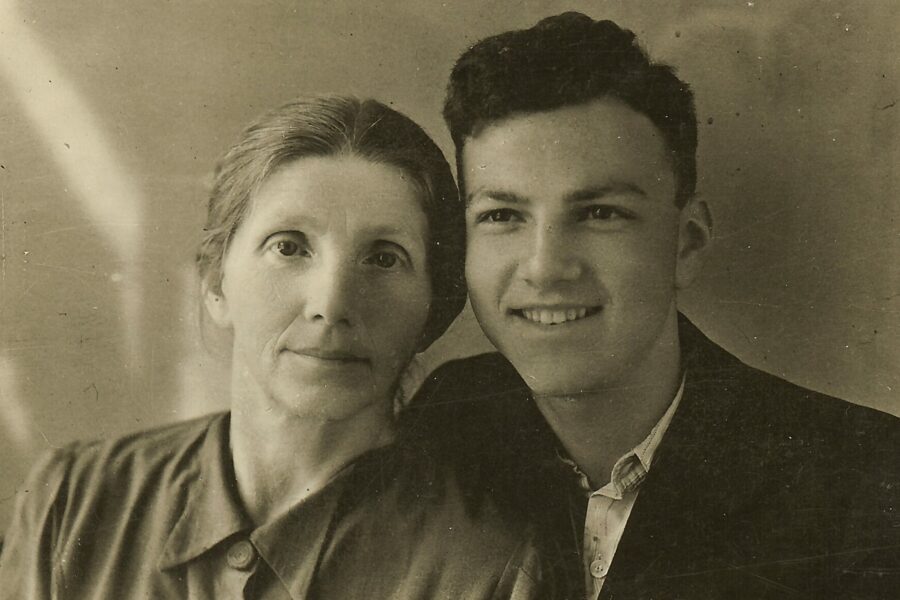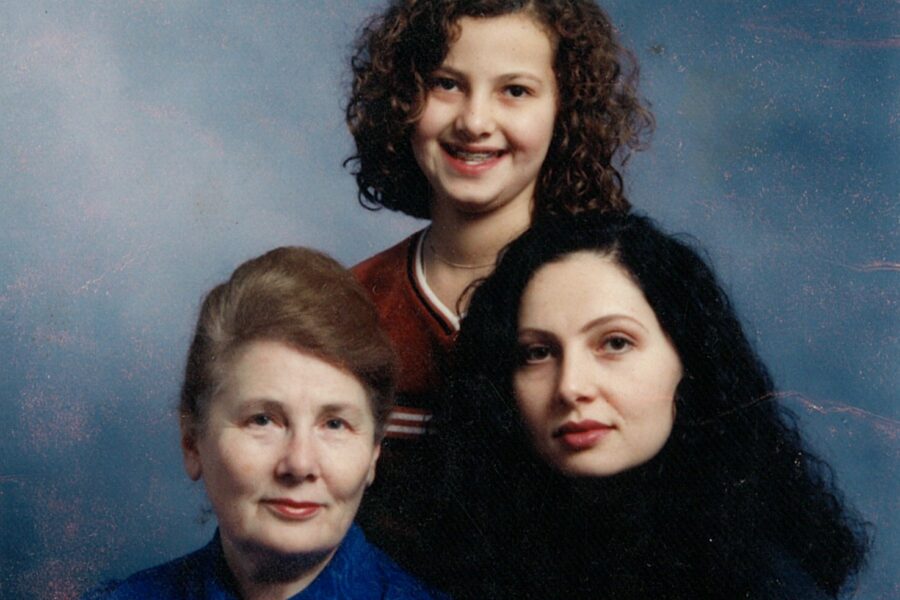I lived in Minsk, the capital of the Byelorussian Soviet Socialist Republic of the former Soviet Union (now Belarus, an independent country), with my mother and older brother, Boris. My mother was a university professor, the head of the German language department. My father passed away in 1937 in Minsk.
All religions were officially forbidden, and all Jewish schools and colleges were closed in the late 1930s. The Jewish population at large did not feel “government” antisemitism before World War II. Deep-seated antisemitism was suppressed by the official Soviet policy of “friendship between all nationalities.”
World War II started in September 1939, when Germany and the former Soviet Union occupied and divided Poland. On June 22, 1941, Germany invaded the U.S.S.R.
In May or June 1941 I finished sixth grade. I was thirteen years old. My brother, who was twenty years old, finished three years of Minsk Medical School in summer 1941.
We lost all of our possessions when our three- story apartment building burned in a fire caused by German bombardment on June 24, 1941, and also as a result of arson by infiltrated Germans. On June 26 my brother, Boris, and I jumped on an open platform of a moving cargo train going to the East. My mother could not make it, however, so I jumped off the train in order to stay with her. Boris became a military doctor and was missing in action at the front in December 1942.
My mother and I were left in Minsk and watched the first German troops entering the city in the late afternoon of June 27, 1941, only five days after they had crossed the borders of the Soviet Union. Within only fifteen to twenty days of capturing Minsk, the Germans ordered all Jews to move to a ghetto in the assigned area around Yubileynaya Square in July 1941. In accordance with this order, any Jew found in the Russian district would be killed. Several different families were forced to live in a single-family house and/or share one room. The local population quickly occupied the houses and apartments of evicted Jews.
The Germans officially created the Minsk ghetto on August 1, 1941. It was the second-largest ghetto in the occupied Former Soviet Union. About eighty thousand to one hundred thousand Jews were in the Minsk ghetto before the first massacre occurred.
The ghetto was surrounded by barbed wire fences that had only two gates (later, only one), through which guarded columns of Jews went out to work each day in the Russian district and then returned to the ghetto. The Germans organized the Judenrat (the ghetto’s “city hall”) and the ghetto militia to maintain order in the ghetto, to use Jews for all kinds of heavy and dirty work in the Russian district, and to find and isolate people who had infectious diseases, etc. The next German order required all Jews to wear a yellow star on their clothing so that everybody would recognize them as being Jews.
Young men in black uniforms soon appeared on the city streets and in the ghetto. They were Byelorussian local militia formed from the local population who were organized and supervised by the Nazis. Everybody called them polizei. They robbed the Jews in the ghetto. Later they actively participated in the mass murder of Jews and hunted for Jews on the streets in the Russian district. Special Lithuanian and Ukrainian battalions also massacred Jews.
Crossing the barbed wire fences was not difficult, but if the local militia or some local people recognized you as a being a Jew, you could be executed on the spot or brought to the local militia station or to the German Gestapo. For Jews there was no safe place to go. The only option was to wait to be killed.
During all this time in the ghetto, we were in touch with our prewar friend Lena in the Russian district. She was involved in the underground fight against the Germans and had connections to the partisans’ detachments. My mother, who was helping them through her knowledge of the German language, is mentioned in the book Minsk Anti-Nazis Underground. As a result of a cooperative effort between the ghetto and the Russian district undergrounds, and between Russian district underground and partisan activities in the forests, some Jews were able to escape from the ghetto.
It was very difficult to get food in the ghetto. The majority of the ghetto population traded their possessions for food at the fence or during the workday in the Russian district.
In the beginning, my mother and I shared one room (15 square meters or 160 square feet) on Nemiga Street with the Idel’chik family—two parents and their very pretty daughter, Esfir, who was seventeen or eighteen years old.
Nobody believed that very soon the Nazis would start killing Jews. In the beginning of November 1941, however, there began to be rumors that the Nazis were preparing a big “action.” My mother, Esfir, and I risked our lives by going through the barbed wire and spending several days in Lena’s apartment in the Russian district. We were allowed to take Esfir with us, but not her parents. Big Lena risked her life by allowing us to hide in her apartment. After the November 7 pogrom (“action”) we returned to the ghetto. About twelve thousand Jews from our part of the ghetto had been killed in this action; among them were Esfir’s parents. My mother became like a second mother to Esfir. During this action the Germans and local militia escorted columns of Jews under guard through the Russian district during the daytime. The Jews were being taken to the mass killing place, Tuchinka, and the local population witnessed their walk to death.
This part of the ghetto later was used for Jews who had been transported from Europe. I remember very well the arrival of thousands of European Jews in the Minsk ghetto at the end of 1941. We called them “Hamburger” Jews because the first arrivals were from the German city of Hamburg. This Sonderghetto also was secured by barbed wire and guards. Mass killing liquidated the Sonderghetto in summer 1942.
After this November action we found a room on Kollektornaya Street, also located at the ghetto’s border. One night in March 1942, we heard a vehicle stop near the house, people speaking German, and a barking dog. All of us who lived in this house went down into the cellar. We were scared they would find us and kill us. We heard shooting, but nobody entered our house. We were afraid to leave the cellar. The next day we heard a voice crying, “Come out! Come out!” All of us left the cellar and found that it was Esfir who was looking for us. We tearfully embraced her, overwhelmed that we were alive. Outside was a pile of thirty or forty corpses of people from next house and large puddles of blood.
We could not stay any longer in that house and found a small room, about 80 square feet, in a house on Shornaya Street, which also was located at the ghetto border. Zyama, his wife, Ida, and their five- or six-year-old-daughter lived in a bigger room. Zyama built a second wall in their room to create a hiding place (malina). The entrance to the malina was above the kitchen hearth. On July 28, 1942, we heard the noise of vehicles, dogs, and loud conversations and orders in German and Russian. My mother was somewhere in the ghetto, and I was alone with our neighbors. Zyama and Ida immediately placed clothing and water into a washtub next to the hearth, blocking the way to the top of the hearth and the entrance to our malina, and then opened the front door. We wanted to give the impression that we had left the house in a hurry. We also hoped to make it inconvenient for them to climb on the hearth and find the entrance to the malina. We listened as Nazis and local militia entered the rooms, searched them, and left. We were lucky that they did not bring dogs into our rooms. Afraid to go out, we spent several days in the malina. Finally, my mother and Esfir came to our dwelling and called our names. We left our malina and hugged each other in tears. This time each of us escaped death again.
After this massacre, our only choice was to risk our lives by trying to escape from the ghetto. In the beginning of November 1942, Lena provided us with false documents that identified us as Russian, and she helped us meet four people (Vladimir Kazachenok and others) who were on their way to the partisans. They could not take an extra person, so Esfir was left in the ghetto. We asked Big Lena to help her to escape from the ghetto.
We got through the ghetto fence and met these four people far away from the ghetto. We identified ourselves secretly by exchanging some gestures rather than assembling in a group. We hid in the forests during the day and walked at night to avoid the Nazis and militia patrols, and we finally reached the partisans. After several weeks the partisans’ commander—with my mother’s consent—sent us with a group of people (Kazachenok was the appointed leader) across the front line to the non-occupied Soviet Union. He told us that the configuration of the front line in northeastern Byelorussia allowed groups to cross it—the so-called “Vitebsk corridor.” Only Kazachenok knew that we were Jews. If we had been captured by Nazis or by the local militia, they would have killed us immediately.
Hiding under inhuman conditions, suffering from cold and hunger, constantly afraid of being killed by the Nazis or local militia, walking at night and trying to find friendly peasants to get some food, we walked to northeastern Byelorussia. After six weeks to two months of walking and hiding in German-occupied territory, we reached the last point before the front line. We saw a lot of peasants and partisans suffering from cold and hunger. The “corridor” was closed. In spite of this fact, our group leader decided to cross the front line anyway by joining an armed group of partisans.
I remember that before the last dash through the front line, the group leader told us to run, despite being under fire from the Germans. My mother told me to run and not to wait for her because she could not run as fast as I could. I, along with many others, crossed the front line under German fire, and then waited for the rest of the group, not knowing if all of them would make it. My mother came soon, and once again we realized happily that we were alive. Finally we reached the cherished forest. I will never forget how we met the first Soviet soldiers in their uniforms. The soldiers and officers poured out from the dugouts located deeper in the field. There were kisses, handshakes, and tears. We had escaped from the Nazis, and nobody would kill us because we were Jews. We crossed the front line at night in January 1943.
After several days we received transfer documents, a pair of shoes for winter, and train tickets to Kazan (on the Volga River). While we were waiting at the railroad station in the city of Murom to transfer to another train, the routine examination of documents began. Because our transfer documents looked suspicious, we were taken to the railroad KGB station. I remember only that my mother was interrogated all night and that I slept in the hallway near the office door. My mother later told me that the main question was, “Did the Germans send you to spy, and that is why you are alive?”
Some of the events of our escape from the ghetto and our journey to the partisans and across the front line are documented in Kazachenok’s book When the Motherland Is in Danger (Kogda rodina v opas-nosti), published in Minsk in the 1960s.
One of the main goals of ghetto escapees was to tell the world about Germany’s policy to exterminate the Jews, but either nobody was interested or else the Soviets already knew. It was our first and greatest disappointment after we crossed the front line.
In October 1944, my mother and I returned to a liberated Minsk. There we were reunited with Esfir, who survived with Lena’s help in finding the safe road to partisans. Zyama and his family also survived. I later met them in Minsk.
In 1953 I got married. My mother died in February 1965. After two years of fighting with Soviet authorities and losing my engineering job, I left Minsk in 1982 with my wife and daughter. We immigrated to America, arriving in Chicago in April 1982, when we celebrated Passover for the first time in our lives.
In 2001, Yad Vashem posthumously honored our savior, Lena Pechenezhskaya, naming her as Righteous Among the Nations. Her name is also listed on the Ferro Fountain of the Righteous in the Illinois Holocaust Museum & Education Center, located in Skokie.
From 2005, I worked as a volunteer together with museum staff to collect stories, testimonies, documents, photographs, and books from Holocaust survivors from the former Soviet Union who now lived in metropolitan Chicago. We transferred these artifacts to the museum in Skokie. My goal was to help the museum create a permanent exhibition about the “forgotten” Holocaust in German-occupied Soviet territories. Germans and their collaborators killed two million Jews in occupied Soviet territories. Now I am a member of the museum’s speakers’ bureau. My goal is to be alive to witness the story of the Holocaust in the former Soviet Union becoming a part of the museum’s permanent exhibition.
Written by Matus Stolov, Never Heard, Never Forget: Vol. I, 2017







